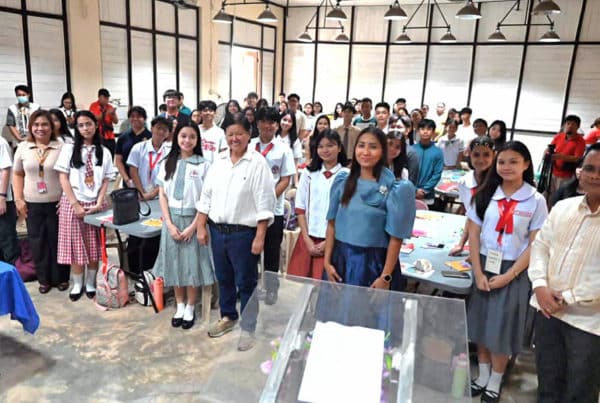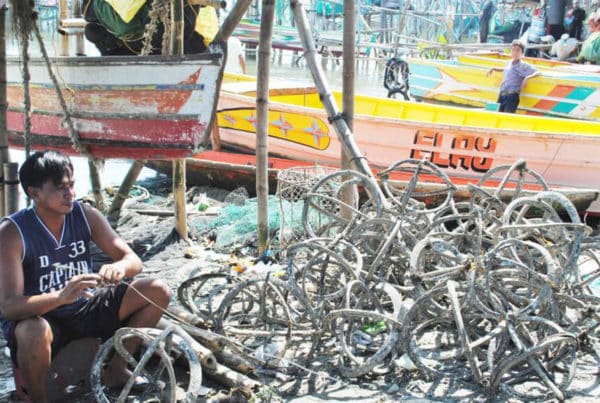Binmaley deploys more artificial reefs
BINMALEY- What nature cannot provide, man will.
This is so true in this town’s case, though touted as the Fishbowl of Pangasinan, the town is not blessed with coral reefs around its coast to ensure regular harvest for its fisherfolk. So the town government decided to install concrete reefs where fish would stay, spawn and multiply.
Eighty-five of the five feet tall artificial coral reefs made of cement reinforced by steel bars that look like a tripod were brought out to the sea fronting in Barangay Buenlag.
“We do not have coral reefs or sea grass so we provide artificial concrete reefs,” Municipal Agriculturist Butch Ferrer said and he expects barnacles and other weeds to grow on these structures and schools of fish would be attracted to stay and multiply in the area.

A worker checks on the concrete artificial reefs ready to be installed in the open sea fronting along Barangay Buenlag.
Aside from the artificial reefs, the town also depends on other fish aggregating device like payaw, a local term, which has also a sinker and floater and leaves from coconut trees or bamboo grasses.
Each module, with five artificial concrete reefs will be positioned in a 10-foot deep water in 25-square meters space and one kilometer away from the shoreline.
These artificial concrete reefs would benefit lowly fishermen called Buenlag Fisherfolks Association because when fish would multiply by spawning there, they would just use hook and line or fish gun, Ferrer said.
A fish structure locally called ‘tabal’ will surround the area where the artificial coral reefs would be installed.
The artificial reefs were funded by Department of Agriculture (P850,000) and P150,000 counterpart of the town.
Ferrer said similar artificial concrete reefs installed in the coastal area of Barangay Sabangan proved effective in increasing fish population of different species here like caballas, pusit, pingka.
This town has the biggest fishpond area in entire Pangasinan but it has no fish pens and fish cages.
The town depends on its production from its fishponds with an area of 3,120 hectares with yearly production of 8,580 metric tons of malaga, bangus, shrimps, among others. (Tita Roces)
Share your Comments or Reactions
Powered by Facebook Comments










